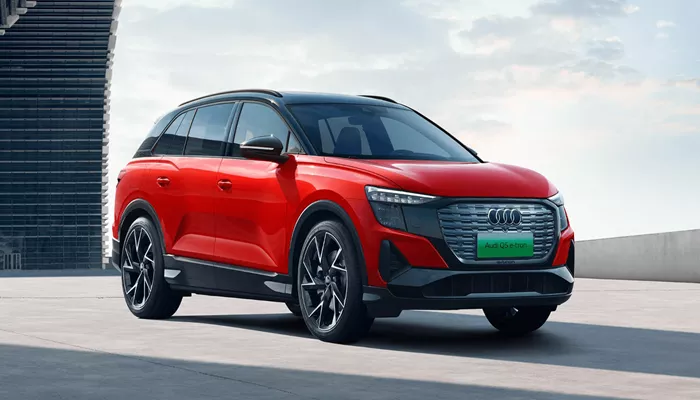CHANGCHUN – Audi’s first dedicated electric vehicle (EV) production base in China is now fully operational, transforming raw steel plates into car components with impressive speed. Robotic arms work efficiently along the assembly line, preparing to manufacture the new Audi Q6L e-tron, a model tailored for the Chinese market.
The Q6L e-tron is built on Audi’s Premium Platform Electric (PPE) at Audi FAW NEV Co Ltd in Changchun, the capital of Jilin province in Northeast China. The electric SUV is expected to launch later this year.
Helmut Stettner, CEO of Audi FAW NEV Co Ltd, has a deep understanding of the Chinese market. He joined FAW-Volkswagen in Changchun in 2011 as plant and production director, where he gained valuable insights into local operations. After a decade, he returned in 2021 to lead the Audi PPE project, focusing on the growth of new energy vehicles (NEVs).
Stettner emphasized Audi’s close cooperation with local partners to rapidly integrate China’s latest innovations. Starting this year, Audi models built on the PPE platform for the Chinese market will feature an advanced intelligent driving assistance system powered by Huawei technology.
Over the years, Stettner has observed the growth of Sino-German automotive cooperation and the rapid development of China’s automotive sector. He highlighted Audi’s pioneering role in local production, stating, “In 1988, we were the first foreign manufacturer to produce in China’s premium segment. Since then, we have expanded our partnerships and launched numerous new models, blending the strengths of both countries.”
The Audi production base in Changchun is designed to have an annual capacity of over 150,000 vehicles. The Q6L e-tron and the upcoming A6L e-tron will be produced using a groundbreaking 9,100-tonne super-large-scale press line, a first within the Volkswagen Group and entirely designed and built by a Chinese supplier.
Stettner sees the shift from internal combustion vehicles to NEVs as an opportunity for both China and Germany. He noted, “The transition to electric mobility is accelerating in China, especially in the premium market. Despite challenges, this shift continues to offer significant growth potential for Audi. We are committed to being a part of this evolution.”
China’s NEV market has emerged as a global leader. In 2024, both the production and sales of NEVs in China exceeded 12.8 million units, keeping the country as the world’s largest producer and consumer of electric vehicles.
China also supplies 70% of the world’s battery materials and 60% of global power batteries, making it a key player in the global EV supply chain.
Stettner credited supportive government policies for driving the growth of China’s NEV market. These policies, which include investments in charging infrastructure, autonomous driving, and intelligent connected vehicles, have created ample opportunities for new players to enter the market. “Customers in China are very open to new technologies, with connectivity being a major focus,” he said.
Changchun, known as the “cradle of China’s automotive industry,” was home to the country’s first automobile workshop established in 1953. Having lived there for several years, Stettner now considers the city his “second hometown,” appreciating its scenic beauty, local cuisine, and business-friendly environment.

